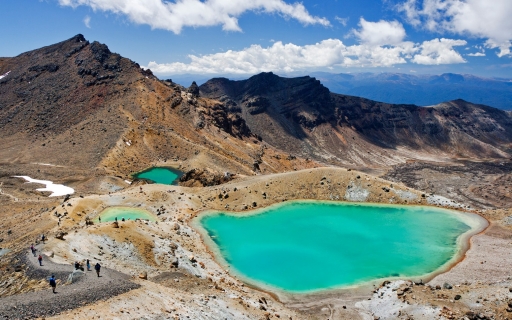Rai Valley Weather and Climate: A Comprehensive Guide
The temperature in Rai Valley varies moderately throughout the year.
The temperatures shift from warm
to mild.
It is also known for its large amounts of rainfall.
Let's now guide you through the climate details for a complete overview.
Average maximum day and minimum night temperature
The weather in Rai Valley changes moderately throughout the year, offering enough variation to appreciate each season. Typically, average maximum daytime temperatures range from a comfortable 22°C in February to a moderate 12°C in the coolest month, July.
Nights are cooler, with lows often dropping to around 4°C during the colder months.Check out our detailed temperature page for more information.
Temperature ranges by month
Precipitation and rainy days
Rai Valley has a relatively rainy climate with high precipitation levels, averaging 1318 mm of rainfall annually. Precipitation levels in Rai Valley remain relatively steady throughout the year. October has the most rain, with 132 mm over 12 days. In February, this drops slightly to 84 mm, making the city's climate fairly predictable.
The mean monthly precipitation over the year, including rain, hail and snow
Sunshine over the year
For those who appreciate different seasons, Rai Valley serves as an ideal destination. Expect longer, more sun-filled days in January with an average of 8.9 hours of sunshine daily, and embrace the darker days in June, offering only 4.8 hours of daily sunlight.
Visit our detailed sunshine hours page for more information.
Monthly hours of sunshine
Daily hours of sunshine
Average humidity
The city experiences its highest humidity in June, reaching 90%. In January, the humidity drops to its lowest level at 74%. What does this mean? Read our detailed page on humidity levels for further details.
Relative humidity over the year
overcast and rain partly cloudy and thunder partly cloudy and no rainForecast for Rai Valley
Select a Month of Interest
Check the conditions for any month of the year.
The best time of year to visit Rai Valley in New Zealand
During the months of January, February, March and December you are most likely to experience good weather with pleasant average temperatures that fall between 20°C and 26°C.Other facts from our historical weather data:
February has an average maximum temperature of 22°C and is the warmest month of the year.
The coldest month is July with an average maximum temperature of 12°C.
October tops the wettest month list with 132 mm of rainfall.
February is the driest month with 84 mm of precipitation.
January is the sunniest month with an average of 268 hours of sunshine.
No idea where to travel to this year? We have a tool that recommends destinations based on your ideal conditions. Find out where to go with our weather planner.




